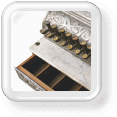- By Dan Veaner
- News
 Print
Print
Village of Lansing officials took another swipe at the budget in their Monday meeting in an effort to finalize it before a public hearing on April 3. With $351,425,899 taxable assessed value the Village hopes to lower the tax rate this year, even though the tax levy will go up.
Village taxes have historically approximated the rise in the cost of living. This year will be no exception with about a 3% rise. But Mayor Don Hartill told Trustees last Monday that he intends to lower the tax rate. Last year's tax rate was $1.65 pet $1,000 of assessed value. That rate could be diminished by as much as ten cents if all the figures work out. Hartill says that a tax rate of $1.58 would achieve the 3% cost of living rise.
One factor that would lower taxes is the amount collected for the capital contingency fund. Hartill told the Trustees, "If we continue the current tax rate we'd end up transferring significant amounts to contingency." If the rate drops to $1.55 the monies collected for the contingency fund would drop from around $200,000 to about $165,000. Hartill says that is acceptable, because with the Triphammer Road project nearing completion less money is needed.
Another factor affecting the size of the levy is that the Village has other income streams. Perhaps the most lucrative of these is the sales tax. This year the Village's income from sales tax is $600,000. Other income comes from interest and penalties, utility tax, the cable franchise fee, departmental income, inspection fees, zoning and planning board fees, State aid and a myriad of other sources.
The Village budget must be passed by April 15. A public hearing is scheduled at the next Village Trustees meeting, at 7:30 on April 3.
----
v2i12
Village taxes have historically approximated the rise in the cost of living. This year will be no exception with about a 3% rise. But Mayor Don Hartill told Trustees last Monday that he intends to lower the tax rate. Last year's tax rate was $1.65 pet $1,000 of assessed value. That rate could be diminished by as much as ten cents if all the figures work out. Hartill says that a tax rate of $1.58 would achieve the 3% cost of living rise.
One factor that would lower taxes is the amount collected for the capital contingency fund. Hartill told the Trustees, "If we continue the current tax rate we'd end up transferring significant amounts to contingency." If the rate drops to $1.55 the monies collected for the contingency fund would drop from around $200,000 to about $165,000. Hartill says that is acceptable, because with the Triphammer Road project nearing completion less money is needed.
A Property Tax Primer  Thinking about taxes can make your head explode. Even when the tax rate goes down, taxes go up. Why is that? Thinking about taxes can make your head explode. Even when the tax rate goes down, taxes go up. Why is that?Property taxes have three major elements: your real property assessment, the tax rate and the tax levy. The tax rate is the amount you pay for every $1000 of assessed value on your home. Let's say the tax rate is one dollar. If your home is worth $1000 you pay one buck. If it is worth $100,000 you pay $100. First figure out how much money you need to run the Village for next year. Next subtract the money you expect to come from every source except for property taxes. Whatever is left is the tax levy. The levy is the total amount of money the Village will collect in property taxes for a year. How can the levy go up while the rate goes down? Tompkins County tax assessors place a value on your home based on their idea of what it might sell for if you were to place it on the market. That is based on how much land you have, how big and how nice a house you have, how nice the surrounding homes are and factors like that. Let's use that one dollar tax rate example. If your home was valued at $100,000 last year you paid $100. Let's say this year your evaluation goes up to $110,000. Now you're paying ten dollars more, even though the tax rate didn't change. The Village still has leeway to lower the tax rate and still rake in more cash. Complicating this more is the fact that it is impossible to know how much money a municipality will actually make from other revenue sources. Officials try to work from the "worst case scenario," conservatively estimating income and expenses for the coming year. Meanwhile taxpayers always hope for lower valuations (this used to happen when the real estate was a buyer's market, meaning lower prices for home buyers, but not so much now when business is good for realtors) paired with lower levies (not likely as the cost of living does not tend to go down, and prices of everything go up and Village employees have bills to pay, too). |
Another factor affecting the size of the levy is that the Village has other income streams. Perhaps the most lucrative of these is the sales tax. This year the Village's income from sales tax is $600,000. Other income comes from interest and penalties, utility tax, the cable franchise fee, departmental income, inspection fees, zoning and planning board fees, State aid and a myriad of other sources.
The Village budget must be passed by April 15. A public hearing is scheduled at the next Village Trustees meeting, at 7:30 on April 3.
----
v2i12



